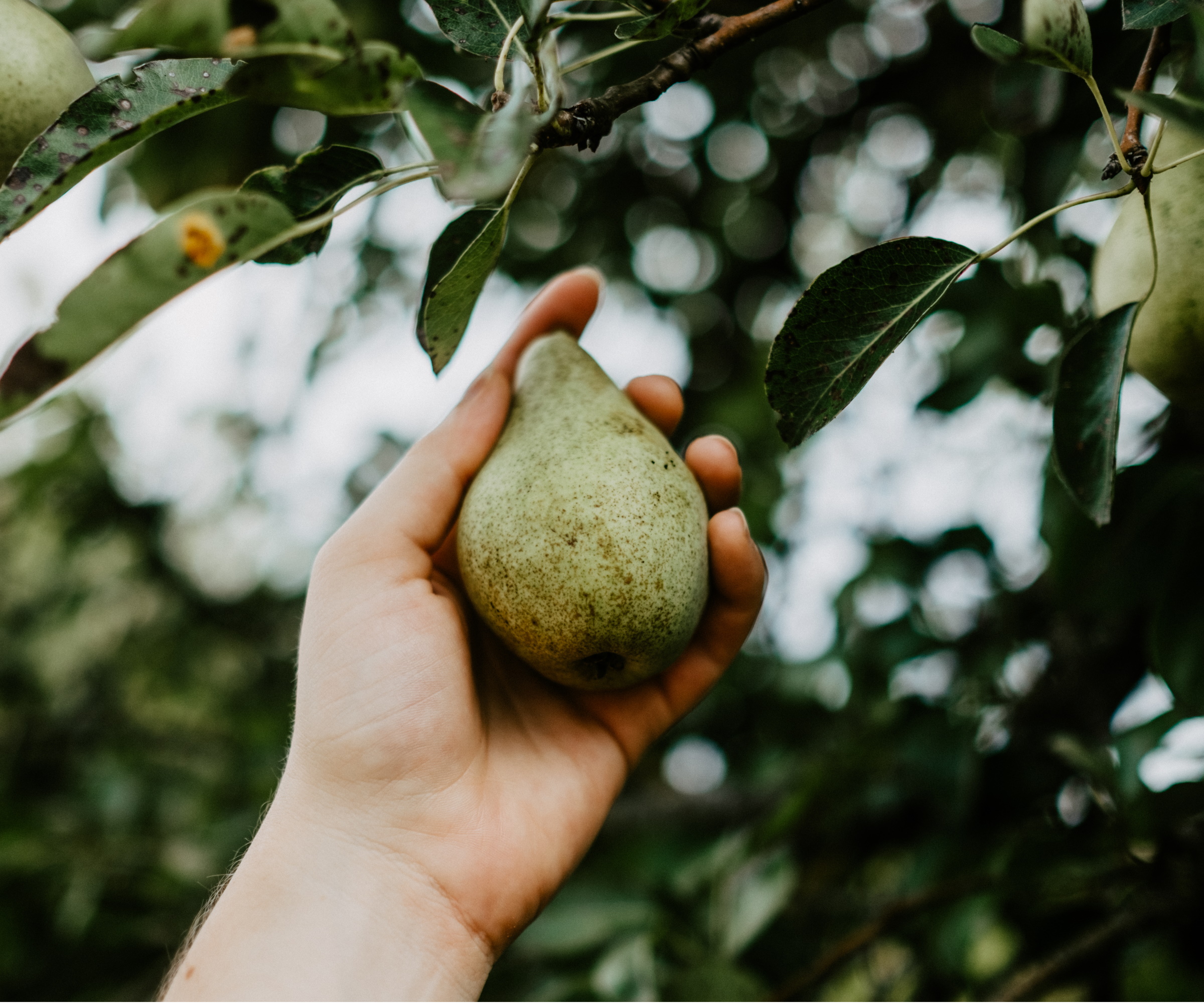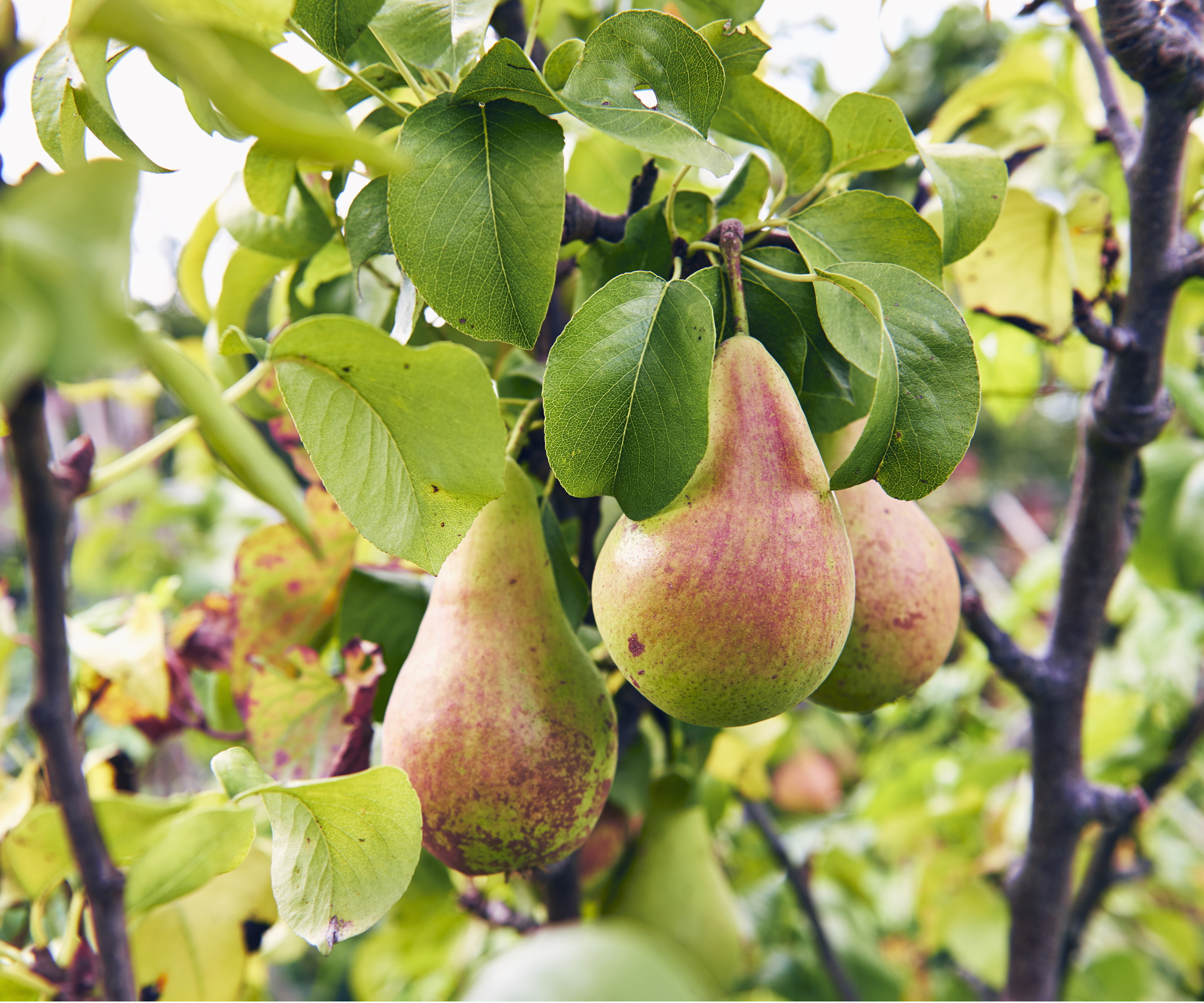How to get a pear tree to fruit – 3 expert tips for a larger, juicier harvest
Giving your pear tree optimal growing conditions can bring delicious fruit and beautiful spring blossoms


Plucking fruit from your yard is one of the rewards many gardeners look forward to in late-summer and early-fall. That's why it can be frustrating if your fruit trees don't provide an abundant harvest after caring for them all year.
Of all the fruit trees you can grow in your yard, pear trees are some of the slower to produce a crop. Having the incorrect growing conditions will only slow this process down even more, leaving your tree barren on fruit by the time summer comes to an end.
But don't worry. Whether you grow your pear tree as a tree to espalier or as a fruit tree in a pot, there are a range of things you can do to solve your no-fruit problem - and they're all listed right here.

3 ways to get your pear tree to fruit
Before you start investigating what needs changing in your pear tree's growing environment to get it to fruit, it's worth noting pear trees also won't fruit if they're too young. On average, pear trees will only start fruiting after three years, but it can also take as long as seven years.
'I've also found you can get a good supply of fruit one year and then, a much lower harvest the next. I think that's just the nature of the tree,' says Annette Hird, expert gardener at Easy Urban Gardens.
Nevertheless, if your pear tree is mature enough but isn't producing any fruit, you might need to do one of the below things to encourage fruit production.
1. Provide your pear tree with plenty of sunlight

Just like trying to get a blueberry bush to fruit and getting a fig tree to fruit, you need to provide a pear tree with plenty of direct sunlight for it to not only produce fruit, but also stay in a healthy condition.
Design expertise in your inbox – from inspiring decorating ideas and beautiful celebrity homes to practical gardening advice and shopping round-ups.
'Pear trees need at least five to six hours of direct sunlight,' notes Tammy Sons, horticulturist and CEO of TN Nurseries. Even though there are 3,000+ varieties of pear trees, including Asian pears, pear trees are generally hardy to US hardiness zone four to zone nine.
It's also best to protect your pear trees from any strong winds and they should be kept somewhere warm. A south-facing garden wall can be the ideal location.
If you're unable to provide your pear tree with a sunny spot in your yard, consider growing a pear tree in a pot and placing it in a bright conservatory or greenhouse under a grow light - like this grow light from Amazon.

Tammy Sons is a horticulture plant expert, garden writer, and educator. Tammy is the CEO and founder of TN Nursery, a thriving online plant nursery based in Altamont, Tennessee. She is also a prolific writer, sharing her knowledge through articles on various gardening topics, including plant care, sustainable landscaping, and the latest trends in horticulture.
2. Give your pear tree a boost of potassium

A lack of fruit is often a sign of a nutrient deficiency, as fruit trees and shrubs require plenty of potassium to grow their crop.
One simple solution is ensuring you fertilize your fruit trees. It's best to use products with a plant fertilizer number high in potassium - the third number in the NPK ratio.
This fruit tree fertilizer from Amazon is a good choice. Just take care to follow manufacturer instructions and avoid making fertilizing mistakes. 'The fertilizer should be applied in late winter just before the tree comes out of dormancy so the roots have plenty of nutrients to absorb from the soil,' advises Annette Hird.
You can also use a homemade tomato fertilizer which will is high in potassium and will benefit a pear tree.
'One thing I have done to a non-fruiting lemon tree is spread some wood ash on the soil at the base of the tree and this resulted in a bumper harvest,' says Annette. 'This would work with pear trees too because the potassium and other nutrients in the ash will help promote fruiting,' she adds.

Annette Hird has an Associate Diploma in Horticulture and is an urban gardening expert. She has worked as a professional propagator and managed, maintained and improved many urban and rural gardens. She also enjoys growing her own fruit, vegetables, herbs and flowers as well as many different types of ornamental plants.
3. Keep your pear tree well-watered

You won't find yourself harvesting a pear tree if you've let it dry out over the hotter months. These trees, just like many fruit trees, require lots of water to be bountiful.
'Not enough water, like soil nutrients, will produce tiny dried-up fruits,' notes Tammy.
While there are plenty of drought-tolerant fruit trees, pear trees won't cope well with prolonged dry periods. It's essential to water your plants regularly, especially when the outside temperature is getting warmer.
'Overwatering fruit trees are bad for root rot,' warns Tammy. 'Ensure your pear tree is growing in rich, fertile and well-drained soil,' she adds.
You can use this soil moisture meter from Amazon to test the moisture levels of your pear tree's soil and check when it's time to give them a drink.
FAQs
Should I cover my pear tree in winter?
It's important to protect plants from frost so they remain healthy through the harsher weather conditions. Pear trees are no different and it can be wise to winterize them to cope with dropping temperatures. You can bring potted pear trees into a conservatory or greenhouse to overwinter and cover larger pear trees with a horticultural fleece, available at Amazon. Not doing so may affect your pear tree's ability to produce fruit.
Will pruning help my pear tree to fruit?
Yes, pruning pear trees to remove any dead and damaged plant material is wise for keeping it in fit condition. 'Pruning the dead off will stimulate growth, but this must be done in the dormant season,' advises Tammy Sons, horticulturist and CEO of TN Nurseries. Simply use sharp essential gardening tools, like these pruning shears from Amazon, and make sure to clean them after use to prevent the spread of pests and diseases.
Just remember it might take some time to get a stubborn pear tree to fruit, but staying consistent with optimal growing conditions and care should bring you delicious fruit to enjoy. If you don't have the biggest outdoor space, or simply want to bring your kitchen garden indoors, try also growing some of the best indoor fruit trees.

Tenielle is a Gardens Content Editor at Homes & Gardens. She holds a qualification in MA Magazine Journalism and has over six years of journalistic experience. Before coming to Homes & Gardens, Tenielle was in the editorial department at the Royal Horticultural Society and worked on The Garden magazine. As our in-house houseplant expert, Tenielle writes on a range of solutions to houseplant problems, as well as other 'how to' guides, inspiring garden projects, and the latest gardening news. When she isn't writing, Tenielle can be found propagating her ever-growing collection of indoor plants, helping others overcome common houseplant pests and diseases, volunteering at a local gardening club, and attending gardening workshops, like a composting masterclass.